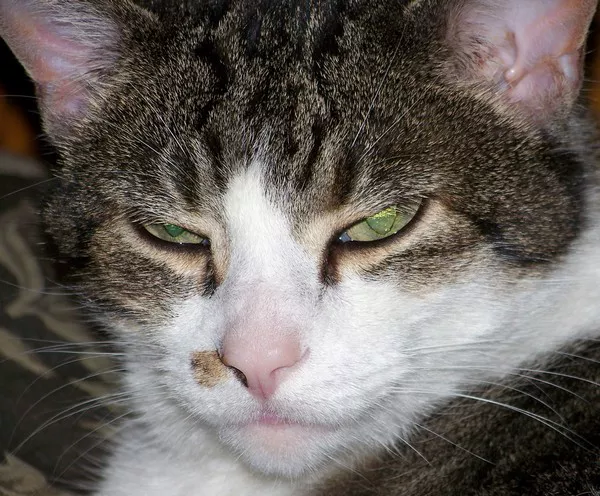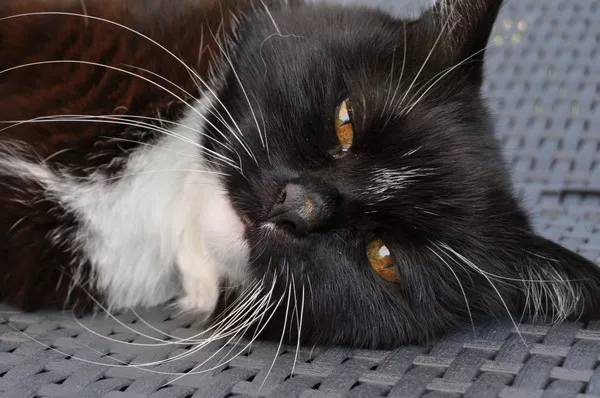Choosing the right cat litter is a crucial aspect of responsible cat ownership that often goes overlooked. While it may seem like a mundane decision, the type of litter you use can significantly impact your cat’s health, hygiene, and overall well-being. A suitable litter not only provides a comfortable and clean environment for your feline friend but also helps prevent health issues related to urinary tract infections, respiratory problems, and more. This comprehensive guide will explore the best cat litter options for promoting cat health, discuss the key factors to consider when selecting litter, highlight potential drawbacks of various types, and provide recommendations for top brands. By the end of this essay, you will have the knowledge needed to make an informed decision about the best cat litter for your beloved pet.
The Importance of Choosing the Right Cat Litter
Health Implications
The litter box is an essential part of your cat’s environment, and the type of litter used can have various health implications. Here are some health concerns associated with inappropriate litter choices:
Urinary Tract Issues: Certain litters can cause irritation to a cat’s sensitive paws or respiratory system. Cats that are uncomfortable may avoid the litter box, leading to urinary retention or infections.
Respiratory Problems: Dusty litters can contribute to respiratory issues, especially in cats with pre-existing conditions such as asthma. Fine particles can be inhaled by both cats and humans, leading to health problems.
Bacterial Growth: Some litters do not absorb moisture effectively, leading to a buildup of bacteria and odors. This can create an unhealthy environment for your cat and increase the risk of infections.
Behavioral Considerations
Cats are creatures of habit, and their litter box habits can be influenced by the type of litter used. A litter that is uncomfortable or unpleasant can lead to:
Litter Box Aversion: If a cat dislikes the texture or smell of the litter, it may refuse to use the box, leading to inappropriate elimination behaviors.
Stress and Anxiety: Cats are sensitive to changes in their environment. Switching to a new litter without gradual introduction can cause stress, leading to behavioral issues.
Environmental Impact
In addition to health considerations, the environmental impact of cat litter is also worth noting. Many traditional litters are made from non-renewable resources and contribute to landfill waste. Opting for eco-friendly litter options can be beneficial for both your cat and the planet.
Types of Cat Litter
There are several types of cat litter available on the market, each with its own benefits and drawbacks. Understanding these options is essential for making an informed choice.
Clumping Clay Litter
Overview: Clumping clay litter is made from sodium bentonite clay, which absorbs moisture and forms solid clumps when wet.
Benefits:
Easy Cleanup: The clumping action makes it easy to scoop out waste, helping to maintain a clean litter box.
Odor Control: Many clumping litters have good odor control properties, as they trap moisture and odors effectively.
Drawbacks:
Dust Production: Some clumping litters produce dust, which can be harmful to both cats and humans, especially those with respiratory issues.
Non-Biodegradable: Traditional clay litters are not environmentally friendly, as they contribute to landfill waste.
Non-Clumping Clay Litter
Overview: Non-clumping clay litter is made from clay that absorbs moisture but does not form clumps.
Benefits:
Absorbent: It effectively absorbs moisture, keeping the litter box dry.
Low Dust Options: Some non-clumping litters are available in low-dust formulations.
Drawbacks:
Difficult Cleanup: Since it does not clump, it can be more challenging to clean the litter box.
Odor Control: It may not control odors as effectively as clumping litters.
Crystal Litter
Overview: Crystal litter is made from tiny silica crystals that absorb moisture and control odors.
Benefits:
Low Dust: Crystal litters produce very little dust, making them suitable for cats with respiratory issues.
Long-Lasting: They can last longer than traditional clay litters, requiring less frequent changes.
Drawbacks:
Texture: Some cats may not like the texture of crystal litter, which can lead to litter box aversion.
Limited Clumping: While they absorb moisture, they do not form clumps, making cleanup less convenient.
Biodegradable Litter
Overview: Biodegradable litters are made from natural materials such as corn, wheat, pine, or recycled paper.
Benefits:
Eco-Friendly: These litters are typically made from renewable resources and are compostable.
Natural Odor Control: Many biodegradable litters have natural odor-fighting properties.
Drawbacks:
Clumping Ability: Some biodegradable litters may not clump as effectively as clay options.
Varied Performance: The performance of biodegradable litters can vary significantly between brands.
Paper Litter
Overview: Paper litter is made from recycled paper and is often used for cats recovering from surgery or with sensitive paws.
Benefits:
Soft Texture: It is gentle on paws and suitable for kittens or older cats.
Low Dust: Paper litter produces minimal dust, making it a good choice for cats with respiratory issues.
Drawbacks:
Odor Control: It may not control odors as effectively as other types of litter.
Absorbency: Paper litter may need to be changed more frequently than clay-based options.
Key Features to Look for in Cat Litter
When selecting a cat litter that promotes health, consider the following key features:
Low Dust Formula
A low-dust litter is essential for minimizing respiratory issues in both cats and humans. Look for litters specifically labeled as low dust or dust-free.
Natural Ingredients
Opt for litters made from natural materials, especially if your cat has sensitivities or allergies. Biodegradable options often contain fewer chemicals and are gentler on your cat’s health.
Odor Control
Effective odor control is crucial for maintaining a pleasant environment. Look for litters that offer natural odor-fighting properties, such as activated charcoal or baking soda.
Clumping Ability
For ease of cleaning, consider a litter that forms solid clumps. This makes it easier to scoop out waste and maintain a clean litter box.
Absorbency
High absorbency is essential for controlling moisture and odors. Look for litters that can absorb a significant amount of liquid without becoming saturated quickly.
Texture and Comfort
Cats have preferences for certain textures. Observe your cat’s behavior when introducing new litter to ensure they are comfortable with the texture.
Recommended Cat Litter Brands for Health
Here are some of the best cat litter brands that prioritize health and wellness:
Dr. Elsey’s Precious Cat Ultra Cat Litter
Overview: This clumping clay litter is known for its exceptional odor control and low dust formula.
Key Features:
Made from high-quality clay with excellent absorbency
Forms hard clumps for easy scooping
Low dust and hypoallergenic
Benefits: Dr. Elsey’s litter is suitable for cats with allergies and provides a clean, comfortable environment.
World’s Best Cat Litter
Overview: Made from whole-kernel corn, this biodegradable litter is both effective and eco-friendly.
Key Features:
Clumping formula for easy cleanup
Natural odor control without synthetic additives
Flushable and compostable
Benefits: This litter is a great choice for environmentally-conscious cat owners who want a natural product.
Tidy Cats Lightweight Cat Litter
Overview: Tidy Cats offers a lightweight clumping litter that is easy to handle and provides good odor control.
Key Features:
Low dust and lightweight for easy pouring
Clumping formula for easy cleanup
Multiple varieties available for different needs
Benefits: Tidy Cats is a trusted brand known for its effective performance and variety of options.
PetFusion BetterBox Cat Litter
Overview: This innovative litter box system uses a unique blend of natural materials for odor control and absorbency.
Key Features:
Made from bamboo, corn, and other natural materials
Clumping and biodegradable
Low dust and eco-friendly
Benefits: PetFusion’s litter is a great choice for health-conscious cat owners looking for a sustainable option.
Ökocat Cat Litter
Overview: Made from reclaimed wood, Ökocat offers a biodegradable, eco-friendly litter option.
Key Features:
Clumping and absorbent
Low dust and natural odor control
Made from sustainably sourced materials
Benefits: This litter is excellent for environmentally-conscious cat owners who want a product that is both effective and sustainable.
Arm & Hammer Clump & Seal Cat Litter
Overview: This clumping clay litter is infused with baking soda for superior odor control.
Key Features:
Hard clumping for easy cleaning
Low dust and hypoallergenic
Long-lasting odor control
Benefits: Arm & Hammer is a well-known brand that combines effective odor control with a comfortable texture.
PetSafe ScoopFree Premium Crystal Non-Clumping Cat Litter
Overview: This crystal litter absorbs moisture and controls odors without clumping.
Key Features:
Low dust and hypoallergenic
Absorbs moisture and dries solid waste to reduce odor
Long-lasting and requires less frequent changes
Benefits: PetSafe’s crystal litter is ideal for cat owners looking for a low-maintenance option that promotes health.
Transitioning to a New Cat Litter
Switching cat litters can be a challenge, especially if your cat is used to a particular type. Here are some tips for a smooth transition:
Gradual Introduction
Introduce the new litter gradually by mixing it with the old litter. Start with a ratio of about 75% old litter to 25% new litter. Over a week or two, gradually increase the proportion of the new litter.
Monitor Your Cat’s Behavior
Observe your cat’s behavior during the transition. If they seem hesitant to use the litter box, consider adjusting the ratio or providing a separate box with the new litter for them to explore.
Provide Multiple Litter Boxes
Having multiple litter boxes with different types of litter can help your cat adjust. This allows them to choose which litter they prefer and can reduce stress during the transition.
Maintain Cleanliness
Keep the litter box clean during the transition. Regular scooping and changing of litter will encourage your cat to use the box and help them adapt to the new litter.
Maintaining a Healthy Litter Box Environment
Creating and maintaining a healthy litter box environment is essential for your cat’s health. Here are some tips:
Regular Cleaning
Scoop the litter box daily to remove waste and clumps. Change the litter completely at least once a week, and wash the box with mild soap and water to prevent bacteria buildup.
Optimal Location
Place the litter box in a quiet, easily accessible location. Avoid placing it near food and water bowls, as cats prefer to keep their elimination area separate from their eating area.
Litter Box Size and Number
Ensure that the litter box is large enough for your cat to move around comfortably. A general rule of thumb is to have one litter box per cat, plus one extra.
Monitor for Health Issues
Keep an eye on your cat’s litter box habits. Changes in urination or defecation patterns can indicate health issues. If you notice any unusual behavior, consult your veterinarian.
Conclusion
Choosing the best cat litter for your cat’s health is an essential part of responsible pet ownership. The right litter can promote hygiene, comfort, and overall well-being while minimizing health risks associated with inappropriate litter choices. With various options available, including clumping clay, biodegradable, and crystal litters, it’s important to consider factors such as dust production, odor control, and your cat’s preferences.
Brands like Dr. Elsey’s, World’s Best, Tidy Cats, and Ökocat offer excellent choices that prioritize health and environmental sustainability. By understanding the importance of litter selection and maintaining a clean litter box environment, you can help ensure your cat remains healthy and happy.
Investing time and effort into finding the right litter will pay off in the long run, benefiting not only your cat’s health but also your relationship with your furry friend. With the right knowledge and resources, you can create a comfortable and healthy litter box experience for your beloved pet.
Related topic:



























